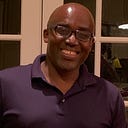Member-only story
Those Simulations
By Nana Dadzie Ghansah
Acting separately in 2019, two groups in the US ran simulations of an important event — a novel respiratory virus that broke out and caused a pandemic.
Both simulations revealed glaring deficiencies in the US’ preparations for such an unfortunate event.
The first simulation was run in Washington DC and titled “ Crimson Contagion”. It was organized by the Department of Health and Human Services (HHS) and led by former Air Force physician Robert Kadlec, an expert in biodefense. The program was started under the Obama administration after the 2014 Ebola outbreak. The staff at HHS kept it going under the Trump administration.
Last year’s simulation was run with dozens of states and federal agencies, charitable groups, insurance companies, and major hospitals.
The exercise imagined a “pandemic flu” that originated in China, infected 35 tourists who visited China and spread globally after these tourists returned to their respective home countries. The disease broke out in the US after the son of the infected tourist, who had a cough and body aches, attended a concert in Chicago and infected others.
The simulation ran from January to August of 2019 and in the process revealed several worrisome problems — problems that we are seeing play out even now: insufficient…
